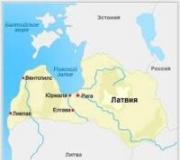You can propagate hydrangea. Winter cuttings of hydrangea - an unusual way
How to propagate hydrangea from cuttings - step-by-step instruction for beginners Cuttings are the easiest way to propagate any type of hydrangea. Lignified cuttings take root poorly, so it is better to use annual green shoots. In this article we will tell you in detail how to grow spectacular hydrangea from cuttings. Hydrangea can be propagated by cuttings in both spring and summer. But most the right time for this case - mid-summer (shortly before flowering begins). Therefore, it is recommended to cut cuttings from the bush at the moment when the buds have just begun to form on the plant. But at the same time, it is important not to wait until the shoots become lignified, otherwise the cuttings will take root with difficulty. It is best to cut shoots early in the morning. To prevent them from wilting, keep the hydrangea cuttings in water until cuttings. What should hydrangea cuttings be like? To cut hydrangea in spring and summer, it is necessary to cut off the top of a young side shoot with 2-3 pairs of leaves. In this case, the two lower leaves should be removed and an oblique cut (at an angle of 45 degrees) should be made on the cutting just below the node. The upper cut is made straight and all remaining leaves are shortened by half. If buds have already formed on the hydrangea shoots, then the top with the inflorescence needs to be cut off. For rooting to be successful, it is recommended to soak the cuttings in a solution of a growth stimulator (Epin or HB101) - according to the instructions. Then dust the lower cut with a root formation stimulator in the form of powder or granules (for example, Kornevin). How to root hydrangea cuttings? In addition to the cuttings themselves, prepare the container, substrate and water (in a watering can and spray bottle) in advance. For rooting hydrangea, a mixture of coarse sand and peat in a 1:2 ratio is suitable. The soil mixture is moistened and leveled. Then the surface of the soil is sprinkled with wet sand (2 cm layer). Hydrangea cuttings are planted to a depth of 2-3 cm. The distance between them should be such that the leaves of the cuttings do not touch each other. Usually this is at least 5 cm. The cuttings are sprayed clean water using a spray bottle. Then cover with a plastic bag or a glass or plastic cap (you can use a cut bottle). Optimal temperature air – 18-25°C. In such conditions, hydrangea cuttings take root after 3-4 weeks. The signal for this will be the appearance of new leaves on them. Caring for cuttings after rooting After the roots appear, the covering material is removed and the cuttings are planted in separate pots filled with the mixture. garden soil , peat and sand (in the ratio (2:2:1) and continue to grow in shady place . At the same time, do not forget to water regularly. On permanent place Hydrangea grown from cuttings is planted only next spring, and is first hardened off on the balcony. In addition, if the plant is frail, it is better to first place it in a garden bed until it gets stronger. Tree and large-leaved hydrangeas can also be propagated from semi-woody and lignified shoots (in spring and autumn). And for cuttings
paniculata hydrangea Only green cuttings that are cut in summer are suitable. Hurry before the plant blooms! Hydrangea - beautiful ornamental plant, during the flowering period, saturating the air with the wonderful aroma of honey. With its help, landscape designers design the walls of buildings, arches, and main entrances. She is also beautiful in the summer, when she throws out baskets of white, lilac or
pink flowers
- , and in the fall, when its leaves turn bright yellow, so many gardeners have a natural question: how to propagate hydrangea? What ways are there, what is the optimal time frame for this?
- Hydrangea can be propagated:
- cuttings;
- layering;
making a bush;
seeds.
In practice, cuttings are most often used, since this is the simplest and most accessible method. Moreover, it can be propagated in this way at almost any time of the year! Green cuttings produce roots in sand, water, or light substrate. Lignified shoots also take root well. Important! The method is applicable to all types and varieties of hydrangeas. There are some differences in propagation by cuttings in
different types
- bush. Although the standard method is applicable to each of them with varying degrees of effectiveness.
- Standard breeding technology
- Green cuttings 7-12 cm long are cut during the summer. For this purpose, choose the fastest growing shoots located on the illuminated side of the bush or tree.
- Subsequently, the seedlings are ventilated 1-3 times a week, increasing the frequency of this procedure every week, and sprayed with a spray bottle. The substrate usually does not need to be watered, since after spraying the drops falling from the leaves naturally moisten it. After 3-4 weeks, roots appear, after which the greenhouse is removed.
Paniculata hydrangea
The optimal period for cutting cuttings is mid-June. Attempts to root this species later or earlier than this period are less effective. To do this, cut off the lower shoots that do not contain buds. If possible, the cutting is torn off with the heel, that is, with a piece of the bark of the branch from which it grew. The length of the cutting can be any: it does not have to be short, as when propagating other species. The cuts are processed by Kornevin, after which the cuttings are planted in pots with light soil, and sometimes (if the weather is not excessively hot) - directly on the beds.
Hydrangea paniculata can bloom in the first year of life. In this case, be sure to cut off all the buds!
Garden hydrangea

This species has a lower percentage of rooting, so its cuttings must be treated with preparations that accelerate root formation. The most popular of them is Kornevin. You can either place the cuttings in the solution or cover the lower sections with a thin layer of powder. Green shoots cut in summer produce slightly better roots.
The rest of the technology is standard.
Tree hydrangea
Cuttings tree hydrangea, unlike the others, take root well in the fall. To do this, shortly before the onset of winter cold, the tops of mature shoots with 2-3 pairs of leaves are cut off. The lower ones are removed completely, the upper ones are cut in half, and only the petioles are left from the middle ones.

The cuttings are washed in a solution of foundationazole for disinfection purposes, after which they are planted in pots with loose, breathable soil and watered with a weak solution of phytosporin (to prevent rot). Finally, the plantings are covered with a mini-greenhouse or plastic bags and placed on a bright windowsill at room temperature. They are ventilated 2-4 times a week.
They are kept in this form until spring, periodically ventilating and moderately watering. Roots appear within a month. The seedlings grow slowly until they are planted in open ground. On the darkest winter days they will need to be illuminated.
Large leaf hydrangea
This species differs from others in being more capricious when cutting cuttings. Only green cuttings, which are cut between June and September, are suitable for this. It is preferable to do this on cloudy days. Take only the tops of shoots with 3-5 pairs of leaves, which are greatly shortened during planting. All other actions are standard.
How to propagate hydrangea by cuttings in water?
Green hydrangea cuttings, except large-leaved variety, give roots even in water. To do this, it is taken from the escape top part with 2-4 pairs of leaves. Lower leaves are completely cut off, and the rest are shortened. The lower cut of the cutting is immersed in water by 1 cm, covered with a mini-greenhouse or a plastic bag.

It is preferable to select a transparent container for this procedure. It is also important to change the water periodically (every 5-7 days), since when it stagnates, pathogenic bacteria multiply, causing decay processes.
After 3-3.5 weeks, the first roots will appear. When they reach a length of 2-3 cm, the plant can be transplanted into a pot or, in cloudy and cool weather, into open ground.
Cuttings before winter
Hydrangea can even be propagated by winter cuttings.
Stages of winter cuttings:
- In the second half of October or shortly before the winter cold snap, the mother plant is dug up, planted in a pot and placed in the basement. It is advisable to use light soil consisting of 4 parts turf soil, 2 parts humus, 1 part peat and 1 part sand. There the bush should stand at temperatures close to street temperatures. As necessary, the earthen ball is watered moderately, but when low temperatures due to slow evaporation, this may not be necessary.
- In mid-January, the plant is brought into a room with a temperature of about +10 degrees. Soon the buds will begin to bloom on the bush. By the end of February, young shoots reach sufficient length for cuttings: they have 3-4 pairs of leaves.
- The cuttings are cut, kept in a root formation stimulator for a day and planted in light, nutritious soil, covered with a mini-greenhouse. They are buried down to the first leaves. Coarse sand can be used instead of soil.
- After a month, the shelter is gradually removed, and young seedlings grow on the windowsill until the start of the warm season. Hydrangea is planted in mid-May in a shaded place.
Preparation of cuttings: technology
If the reproduction path is chosen green cuttings, then cut them only from the top of the shoot.
Less common methods of reproduction:
- By layering. May and September are the optimal time to propagate the plant in this way. The shoot is bent to the ground, fixed with wire and sprinkled with soil at the point of contact. IN next year the branch can be separated from the mother bush and planted in a permanent place of growth.
- Root growth. Most varieties produce root shoots, which can be separated from the main rhizome in the fall using a shovel. It is recommended to grow the young shoot in the garden for the first year, paying special attention to it, and then it can be planted in a permanent place.
- Dividing the bush in early spring before the buds open. The plant is watered abundantly, dug up, and its root system is cleared of soil. The bush is carefully divided into 2-3 parts and planted.
- Seed propagation Hydrangeas are used very rarely and only for breeding purposes, since the resulting plants do not always inherit the decorative characteristics of the mother bush. In addition, seedlings from seeds can be planted in open ground only in the third year! The procedure is standard: seeds are sown in shallow containers on the surface of moist soil, sprayed with a spray bottle and covered with glass or a mini-greenhouse. Shoots appear in a month. The glass is being removed step by step. After another month, they are dumped into larger containers and grown in greenhouse conditions 2 years.
Anyone can propagate hydrangea from cuttings. Cuttings – the best option for amateur gardeners. Thanks to this simple and reliable method everyone can have this wonderful queen of gardens.
Beautiful, bright ones evoke universal admiration for their lush inflorescences of various colors. Many gardeners want to grow this wonderful plant on their site.
Hydrangea propagation is carried out by cuttings, dividing the bush, layering, seeds and grafting. The last two methods are very labor-intensive and difficult for amateur gardeners. Reproduction by dividing the bush is unproductive, and the disadvantage of propagation by layering is the limited number of branches that can be bent. Therefore, the most effective and in an accessible way reproduction garden hydrangea is propagation by cuttings.
Propagation of hydrangea from cuttings can be done in spring, summer or autumn. Autumn breeding provides for the preservation young plant at home. The pot with the plant is placed on the windowsill in a bright and cool room. In spring, it is best to plant hydrangeas from cuttings in early March. But still the most favorable time for cuttings of hydrangea - early summer.
How to propagate hydrangea from cuttings?
In order for the plant to take root well, you need to know how to properly cut hydrangea. Experienced gardeners It is recommended to cut cuttings from a bush in the early morning or in cloudy, cool weather. Green cuttings approximately 10 cm long are cut from annual shoots, the lower leaves are removed, leaving a pair shortened by a third upper leaves with several buds. The cuttings tied in a bunch from below are treated with a growth stimulator, the upper cut is disinfected with brilliant green and planted obliquely in pots with good soil containing a mixture of turf, peat and sand in a ratio of 1:3:4. The cutting is placed in a dug hole approximately 5 cm deep. The soil is pre-treated in a “steam bath” to destroy mold and bacterial spores. You can use a ready-made soil mixture designed for azaleas.
For better rooting of hydrangea cuttings, they are sprayed several times a day with very fine sprays through a spray bottle, creating the effect of artificial fog. The sprouts are placed under glass jars, but they must be ventilated every week. The ventilation process should be short to prevent the hydrangea leaves from drying out.
How to grow hydrangea from cuttings?
Within a month, the cuttings take root and the cover is removed. In areas with a milder climate, rooted cuttings are planted in moist loamy soil in the same summer, where they begin to grow quickly, acquiring a well-developed root system. For the winter, the sprouts are carefully covered. If winters are harsh, then the developing plant must be left in a pot, placed in a cool room until next spring, as the delicate hydrangea may die.
It is necessary to protect a plant planted in open ground from frost for at least two winters until the hydrangea blooms. Flowering is a sign that the hydrangea has adapted and acquired a certain frost resistance. A more delicate variety of the plant - large leaf hydrangea, needs annual shelter for the winter.
Propagation of hydrangea by cuttings in water
Some gardeners practice First stage growing hydrangea (when cuttings undergo intensive root formation)  produce in water. In order for the process of root system formation to occur painlessly, the water must contain a minimum amount of calcium salts. Typically, the rooting process takes 3–4 weeks. After the young roots reach a length of 2.5–3 cm, the sprouts are transplanted into pots with soil. The further process of growing hydrangea takes place in accordance with the already indicated algorithm.
produce in water. In order for the process of root system formation to occur painlessly, the water must contain a minimum amount of calcium salts. Typically, the rooting process takes 3–4 weeks. After the young roots reach a length of 2.5–3 cm, the sprouts are transplanted into pots with soil. The further process of growing hydrangea takes place in accordance with the already indicated algorithm.
Propagation by cuttings of hydrangea is a rather long and labor-intensive process, but as a result you can get many new beautiful plants!
To propagate hydrangeas by cuttings, we dig up the mother plants in the fall and transplant them into pots. We place them in a cellar or greenhouse with a temperature of 0 +5 degrees. Do not allow the temperature to rise above + 5 to avoid awakening the kidneys.
If the foliage on the plant has already fallen, then you can put it in a dark room, if the foliage is preserved - in a light room. In January, move the hydrangea to a room with a temperature of +8 +10 degrees. Get used to warmth gradually!
If you bring a plant into a hot room, its shoots will grow sharply and elongate. If the plant was not replanted in the fall, now is the time to replant it.

Soil mixture composition
4 parts compost, 2 parts turf soil, 1 part peat, 1 part sand. Feed the mother plants completely mineral fertilizer: 10 g of superphosphate, 5 g of potassium and 5 g of ammonium nitrate per 10 liters of water (concentration 2 times less than usual).

Preparation of cuttings
In February, cut the cuttings from the shoots that grew over the previous summer; at this time they have already matured and are quite ready for rooting. You need to cut the cuttings with a sharp knife, choosing a fragment of the shoot with two internodes. From below, make a cut 1 cm below the knot at an angle of 90 degrees, and from above, 1 cm above the knot at an angle of 45 degrees.
Remove the lower leaves completely and cut the upper leaves into half a sheet. Place them in a box with loose, damp soil (you can use commercial soil for azaleas), after dipping them in a solution of a growth stimulator.
Deepen the cuttings by 4-5 cm, cover with a layer of river sand and cover glass jars, halves of plastic bottles or just a piece of polyethylene. The cuttings quickly begin to grow and take root within a month. The cover can be removed at this moment.

In May, the seedlings are separated and transplanted into separate containers. By summer, they are already independent bushes with a developed root system. By autumn it is a completely viable plant in its first year of life. However, it is better to bring it into the room for the first winter! This method of propagating hydrangeas is called winter cuttings.
Hydrangea is a shrub from the hydrangea family with stunning beautiful flowers, for which they are especially loved by landscape designers and owners of flower shops involved in the sale of bouquets and flower arrangements, and ordinary flower growers. There are several ways by which hydrangeas are propagated: cuttings, layering and suckers, dividing the bush and even seeds. Among them vegetative method- lignified or green cuttings - the most common and gives the highest survival rate of young plants.
propagation by cuttings in autumnIf you decide to start preparing hydrangea in the fall, be prepared for the fact that you will need to not only cut suitable cuttings, but also preserve the young plants in room conditions until spring. In this case, cuttings proceed as follows:
- In the fall, before covering adult plants for the winter, cuttings are taken from them. In this case, you should choose only strong, well-developed shoots. Each cutting should contain two leaf nodes. The cutting line should run (both above and below) obliquely and at least 1 cm from the kidney. The lower leaves are removed, leaving a small tail of the petiole at the renal sinus, and the upper ones are cut in half.
- For disinfection purposes, prepared cuttings are soaked for about an hour in a solution of foundationazole. Then the upper cut of the cutting is treated with brilliant green, and the lower cut is sprinkled with a means to stimulate the formation of roots.
- In a container with loose, fertile soil, holes are made in advance, which can be sprinkled with a composition against the formation of rot. A cutting is inserted into the hole, slightly compacted and sprinkled with earth.
- The container with the cuttings is wrapped in a kind of greenhouse, and placed in a bright place. Several times a week, your “greenhouse” needs to be ventilated and the soil moisture checked. As young leaves take root and form, the time the cuttings spend on outdoors increase, while carefully watching to ensure that the shoots do not dry out or freeze. In winter, you can organize additional lighting of shoots

If you decide to start preparing cuttings in the spring, then you need to get down to business in March-April, when the hydrangea has just emerged from dormancy and begins to grow green shoots. The earlier you start cutting cuttings, the more branched the young plants will turn out, and vice versa, later cuttings produce predominantly single-stemmed plants. Planting material It is better to cut from bushes older than 1-2 years: this way the cuttings will be strong, and it will not harm the adult plant. So, propagation of hydrangeas by cuttings in the spring involves the following stages.




